The Homeopathic Treatment of Diariah Beef Dairy Cattle
BVD in cattle or mucosal disease is the most important disease of the cattle farm. The disease is spread worldwide and found in most of the countries. The disease causes substantial economic losses in both dairy and beef farms in various ways. The economic loss by loss of production, retarded growth, abortion, death of newborn calves, and reduced reproductive performances.
History of Bovine Viral Diarrhea in Cattle
Bovine viral diarrhea (BVD) is a contagious viral disease of cattle and other ruminants. The disease was first seen in 1946 in New York as a gastro-enteritis with severe diarrhea, ulcerations of the muzzle and nasal and oral cavities, fever, leukopenia, reduction in milk production, cessation in rumination, and abortions. A similar disease exhibiting the same signs and lesions occurred in Iowa in 1953, which was named Mucosal disease.
BVD in cattle is now recognized that the same virus caused both diseases of enteritis. BVD can be one of the most disastrous diseases of cattle encounter and one of the hardest to rid of when it attacks your cattle. In your herd, BVD can be a severe and costly disease. When your cattle are well vaccinated and not heavily stressed, the disease is usually less severe.
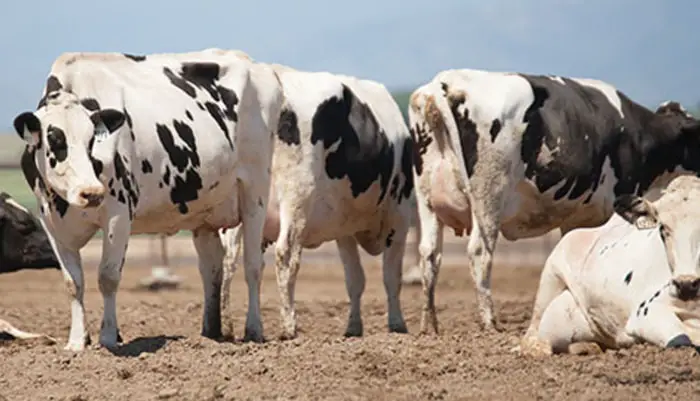
Causes of BVD in Cattle
Bovine viral diarrhea is a disease of cattle and other ruminants, and it is a contagious disease produced by the Bovine viral diarrhea virus. BVD virus is closely related to the Hog Cholera virus and Border Disease virus of sheep, all belonging to the genus Pestivirus under the Flaviviridae family.
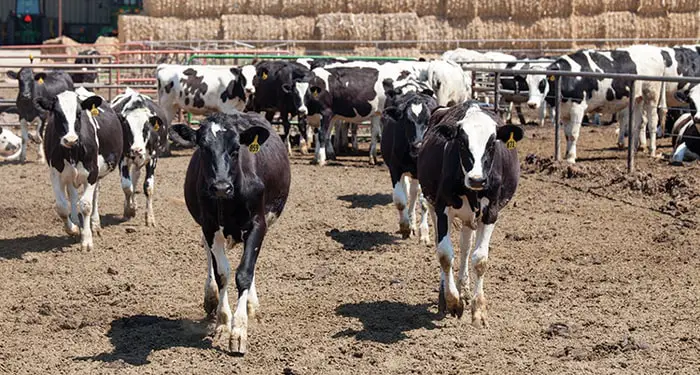
What Type of Virus is BVD?
BVDV virus is an RNA virus that can replicate into many different strains. If the virus finds itself in a difficult condition or situation, another variant can readily be formed that can dominate the BVDV population. These variants can result in alterations in the virus's disease-causing capabilities.
Bovine Viral Diarrhea Virus Type-1 and Type-2
The family of the BVD virus has recently been grouped into two different genotypes known as Type-1 and Type-2. Each of the genotypes has been split into two biotypes, Cytopathic (CP) and Non-cytopathic (NCP).
The difference between the two biotypes, CP and NCP, is determined solely by how they behave in cell cultures in the laboratory. The CP-BVDV will damage cell cultures (cytopathic), and the NCP-BVDV will not (non-cytopathic), and 99% of the field strains of BVDV will be non-cytopathic.
The fundamental difference between the Type-1 and Type-2 genotype BVD viruses is how severe a disease each causes in cattle. The Type-2 BVDV has been responsible for the more severe outbreaks of the disease within the last few years.
Epidemiology of BVD in Cattle
BVD virus is distributed throughout the world and is prevalent in most cattle populations. All ages of cattle are susceptible, but clinical BVD occurs most frequently in cattle six months to 2 years of age. Colostral antibody appears to protect most calves for 3 to 6 months after birth. 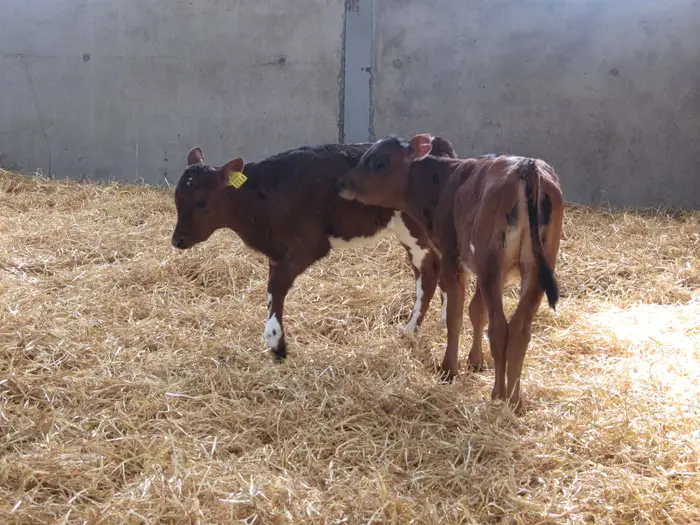
How Does the BVD Virus Spread?
Infected cattle are treated to be the principal reservoirs of BVDV; however, other ruminants, including deer, antelope, and buffalo, are also known to become infected with BVDV.
- The virus is dropping from cattle in the feces and excretions from the nose and mouth.
- Fecal pollution of food and water sources is a necessary means of transmission.
- Aerosol droplets and direct contact also transmit BVD.
- BVDV can also be transmitted from infected animals to susceptible animals during rectal examination when the operator does not change gloves.
- Sometimes BVDV is introduced into your herd by people with contaminated footwear and/or clothing and occasionally by fence line contact with neighbor's cattle.
How does BVDV Usually Get into a Herd?
There are different types of practices that usually get BVDV in a herd. The most common practices are:
- Animals are introducing directly into the herd without spending a week or to in isolation
- The replacement animals purchasing through an auction market
- Substantial herd vaccination program failure to maintain against BVD at all times
- Failure to test new additions to make sure that they are not BVDv carriers
- Contaminated Artificial Insemination equipment used.
Clinical Findings of the Disease
Disease induced by BVD viruses varies in severity, duration, and organ system involved. The signs of the disease are:
Subclinical BVD infection
- Approximately 95% of the cattle that become infected with the BVDV do not show signs of disease that are precisely caused by the virus; however, the BVD virus infection causes the animal's resistance to other infections to be reduced.
- The BVDV has been identified as one of the most significant disease organisms involved with cattle's respiratory disease. The bacteria can then start to multiply in the lungs and eventually reach a disease threshold, e.g., shipping fever.
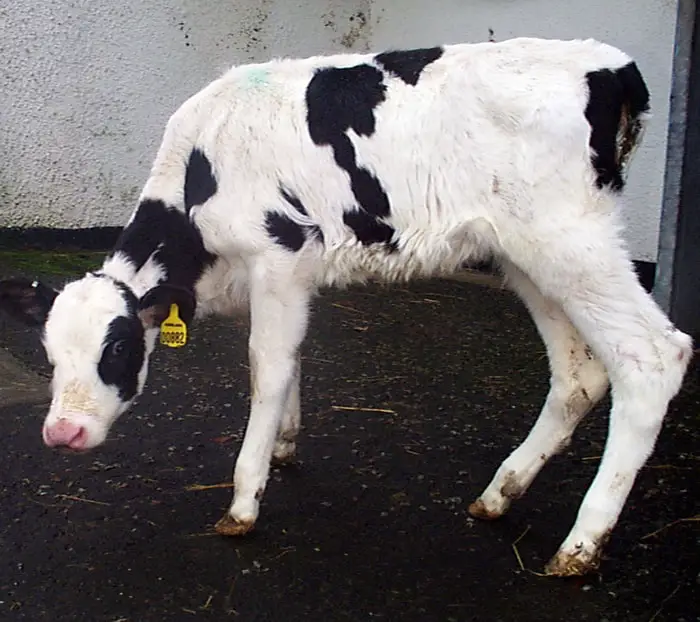
Peracute BVD disease
- The affected animals will show high fevers (107-110 degrees F), intermittent diarrhea, respiratory syndrome, and lack of appetite or anorexia.
- Peracute BVD can cause cattle of all ages, and often results in the death of the animals within 48 hours of the disease regardless of the animal's age.
Acute BVD disease
- Fever of 104-106 degrees F, yellow discharge from the nose and eyes, erosion of the muzzle and in the mouth, and diarrhea may contain mucus and blood.
- Diarrhea is usually present in every herd with no outbreak of acute BVD, but diarrhea is not present in every animal with acute BVD.
Chronic BVD Disease
- Inappetance, scant soft feces, average temperature, intermittent bloat, chronic skin lesions which do not heal (especially interdigital space)
- Congenital disabilities of newborn calves can result from an infection of the fetus with the virus between approximately 125 and 180 days gestation. Cerebellar hypoplasia and ocular abnormalities consist of retinal atrophy, optic neuritis, cataract, and microphthalmia with retinal dysplasia.
Mucosal BVD Disease
- The abrasions extend from the muzzle, through the GIT, and out the rear.
- The destruction is found on the mucosal surfaces throughout the gastric tract, hence, the term mucosal disease.
- The cattle seem like "death warmed over." There is little possibility of survival for these animals.
Serious BVD disease (BVD infection of the Unborn Calf)
- The fetus's age usually determines the result of fetal infection with BVDV at the time of infection.
- Death of the embryo and fetus is common if the infection occurs during the 120 days of pregnancy. Resorption, mummification, or abortion of the dead fetus will result.
How is BVD in Cattle Diagnosed?
A combination of clinical signs, lesions, and epidemiologic features of an outbreak is usually a reasonable basis for a provisional diagnosis of BVD in your cattle. BVD, you should be strongly suspected when fever, leukopenia, respiratory signs, diarrhea, depression, and oral erosions are present. Definitive diagnosis performs by experts, and it requires laboratory procedures for isolation and identification of the viral antigens. Approximate specimens for laboratory examination should include:
- Paired sera: an acute-phase sample and a sample collected 2 to 4 weeks later.
- Nasal swabs.
- Feces or rectal swabs.
- Unclotted blood with anticoagulants such as heparin or EDTA from clinical sick animals.
- Serological methods used to include CFT, IFAT, ELISA, ID, and VNT.
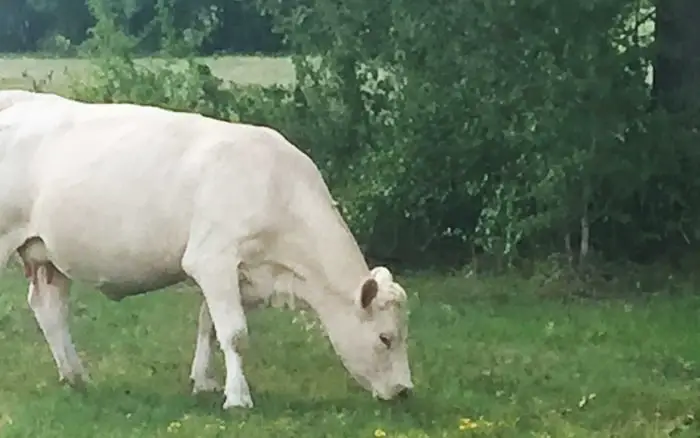
How Do You Treat Bovine Viral Diarrhea?
There is no definitive treatment that can alter the course of BVD infections, but most BVDV infections are subclinical and self-limiting. You may be used antibiotics, B vitamins, and fluids in attempts to control secondary infection and provide supportive therapy. You should be changed in feed rations to enhance the feed's palatability, tempting the sick animal to eat needed nutrients.
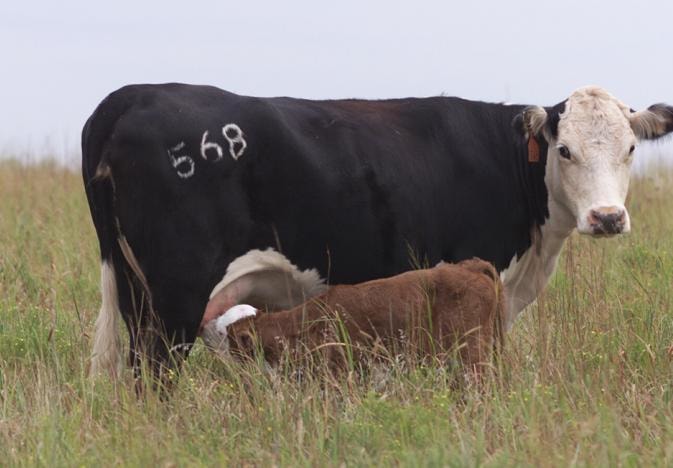
The symptomatic treatment may be used for controlling diarrhea, respiratory signs, and secondary bacterial infection of your cattle. Administration of antiserum may be a benefit in outbreaks of acute disease. Antidiarrheals, antimicrobials such as antibiotics, sulphonamides, expectorant, and fluid and electrolyte therapy are used but in cases of severe acute disease are seldom of many benefits.
Control Measures of Bovine Viral Diarrhea in Cattle
Hygienic management
Control is based on sound management practices, elimination of persistently infected cattle, and vaccination. Cattle should be tested for chronic infection and antibodies against BVDV before entry into a herd. A persistently infected animal will shed BVDV in the herd all of its life. So the persistently infected animals must be identified and culled for slaughter.a closed herd or long term quarantine of newly purchased animals can prevent infections. Bull seminal fluids may transmit BVDV and should be tested for viruses before use.
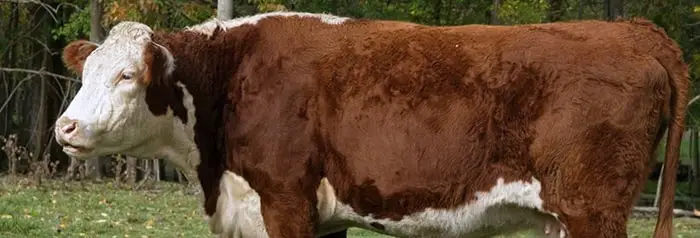
Vaccination
Vaccination of susceptible cattle has been the principal approach to the prevention and control of BVD. There are two forms of the BVD vaccine. They are modified live virus vaccines and killed virus vaccines. The modified live vaccine requires only one injection to stimulate long protection for your cattle and killed virus vaccines is safe to use in all cattle regardless of the pregnancy status.
How to Prevent BVD in a Herd?
The preventive measures of BDV in cattle are as follows:
- Maintain a strict level of herd biosecurity.
- Purchase only opens animals that are known to be BVD-negative before purchase.
- Isolate any new additions or animals re-entering the herd fora maximum of 30 days.
- Test any new additions for BVD and vaccinate during the isolation period.
- Maintain proper sanitation and routinely disinfect contaminated areas. Prevent contamination from outside sources by disinfection.
- Prevent contact with neighboring cattle of unknown status.
- Protect pregnant animals from potential sources of exposure during the first trimester.
- Prevent the mixing of animal groups immediately before breeding and during the first trimester.
- Conduct surveillance for BVD by performing the necropsy on dead animals and collect blood samples on any calves that are poor doers and calves that have respiratory disease.
- Vaccinate the cow herd yearly. Ensure that heifers are vaccinated adequately at six months of age (2 doses) and are booster vaccinated before breeding.
Can Humans Get BVD from Cattle?
There is no record found that can establish the transmission of the BVD virus in cattle. Other diarrheal pathogens like E Coli , Salmonella, and rotavirus may transmit to human and causes diarrhea. As a farm owner of consumers, you need not think about the transmission of disease from your cattle of farm products.
Final Advice on BVD in Cattle
Bovine Viral Diarrhea is a serious disease in both dairy and beef industries. The virus has stayed on the farm for a long time and affects a wide range of age groups of animals. The disease causes severe economic loss by reduction of production (milk and meat), calf and neonatal death, abortion, treatment and management cost, and poor reproductive performances. As a farm owner, you should know the basic information about the disease. In my article, I have tried to accumulate all relevant information on BVD in cattle that will be helpful for the farmer, veterinary students, academicians, and researchers. If the above information helps you, please share it through social media with your friends.
Source: https://www.thevetexpert.com/bvd-in-cattle-causes-signs-diagnosis-treatment-and-prevention/
0 Response to "The Homeopathic Treatment of Diariah Beef Dairy Cattle"
Post a Comment